After this sixth round, six Indians are leading in the Open, with only Sipke Ernst in between. He and Jan Werle, who might have been able to break this spell, took a bye for this second game of the day. Migchiel de Jong and Thomas Beerdsen lost. Bungalowpark Westerbergen, where the Indian delegation is staying, has become a true chess stronghold.
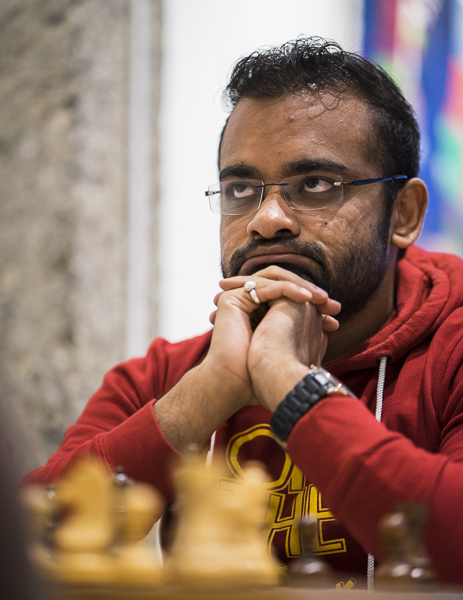
Abhijeet Gupta. Photo: Lennart Ootes
Abhijeet Gupta led De Jong almost noiselessly to a lost endgame, although the Frisian master mumbled afterwards that he thought his position had been OK. In order to keep track, Lalith had to beat his fellow countryman Sundar Shyam. He was helped by the fact that the white player attacked with reckless abandon.
Shyam - Lalith

White has gone too far with his pawn march on the kingside. Behind the pawns there are several holes, and the white centre looks neglected.
25...f5! 26.Raf1
After 26.g6 Black crashes through with 26...fxe4! 27.Bxe4 Nxe4 28.gxh7? (28.Rad1 Rxd1 29.Rxd1 Nxc3 is over as well) 28...Rxf3! 29.Qxf3 Qh4+ 30.Qh3 Rd2+ 31.Rg2 Rxg2+ 32.Kxg2 Qf2+ 33.Kh1 Ng3+.
26...fxe4 27.Nh4 Rxf1 28.Rxf1 Nf7!?
A funny follow-up. After 28...Qxg5 29.Qxg5 hxg5 30.Ng6+ Bxg6 31.hxg6 Kg8 32.b4 White might have been able to hold.
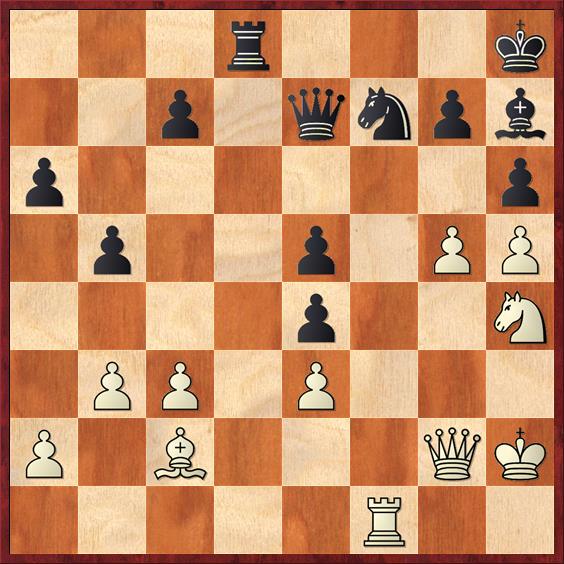
29.Bxe4 Nxg5 30.Bxh7 Kxh7
And after some more wrangling, Black converted his plus pawn.

Eesha Karavade. Photo: Lennart Ootes
The female IM Eesha Karavade also overcame Thomas Beerdsen in a technical game. The winner of this summer’s Dutch Open took a quite different approach.
Van Osch - Sandipan
1.e4 d5 2.exd5 Qxd5 3.Nf3 Bg4 4.Be2 Nc6 5.d4 0–0–0 6.c4 Qf5 7.Be3 Bxf3 8.Bxf3 Nxd4 9.Bg4 Nc2+
This looks fierce, but it has been played several times before.
10.Qxc2 Qxg4 11.0–0

11...e6
However, funnily enough this natural-looking move is new. It’s not that the a7-pawn is hanging, as apart from 11...a6, 11...Nf6/h6 and 11...Qg6 have also been tried here.
12.Nd2 Nf6 13.Qa4 Qh5!?
Rather provocative.
14.Qxa7 Ng4

15.Nf3
Surely Sandipan wouldn’t have been satisfied with 15.Qa8+ Kd7 16.Qa4+ Kc8 and a draw? For 16...c6 17.Bf4 looks very unattractive for Black.
15...Nxe3 16.fxe3
Now Black has a target as well: the weakling on e3.
16...c6 17.Rad1 Be7 18.Nd4 Qc5
Black is perfectly safe.
19.Qa8+
Giving Black an unnecessary tempo – better was 19.Qa4. White was probably still hoping for an attack, with b2-b4, for example.
19...Kc7 20.Qa4 e5 21.Nf5 Bf6 22.Kh1?!
This introduces some back-rank tricks in the position (22.Qb3!?).
22...Rxd1 23.Rxd1 e4
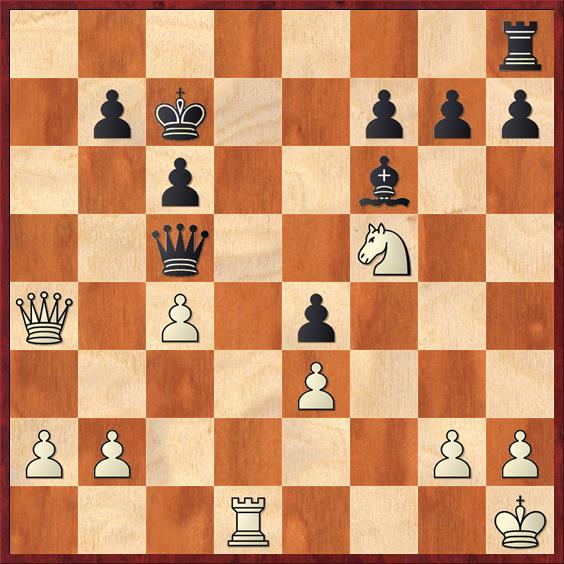
24.Nd6?
24.Nd4 Rd8 25.b4 Qh5 26.Qc2 was the lesser evil. The text move fails to a sequence that is a faint reminder of the famous game (analysis??) Adams-Torre, New Orleans 1920.
24...Rd8 25.Nxe4?
25.b4 Qxe3 26.c5 was the only feasible attempt.
25...Qb4! 26.Qc2 Qxb2! 27.Qb1 Qxa2
And Black was a pawn up. And that was not all, as the black pieces are more active here. Sandipan won on the 43th move.

Mees van Osch. Photo: Lennart Ootes
The legendary grandmaster Oleg Romanishin is in terrible shape in this tournament. Today he rose to 4 points with a very lucky break.
Bunyatov – Romanishin
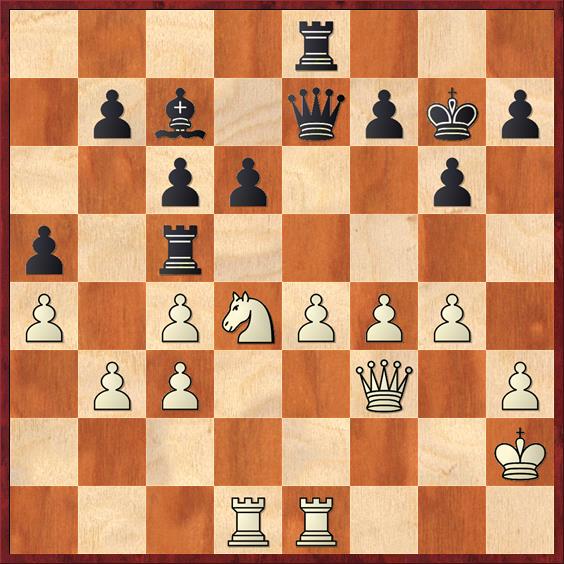
In this position, Bunyatov exceeded the time limit, doubtlessly considering whether to play his queen to f1, e2 or d3. In either case, the threat is 37.b4, winning a rook, and Black can only prevent this by giving a second pawn by 36...b5. Bunyatov thought he remembered from two years ago, when he also played here, that he would get an extra half hour after 35 instead of 40 moves...
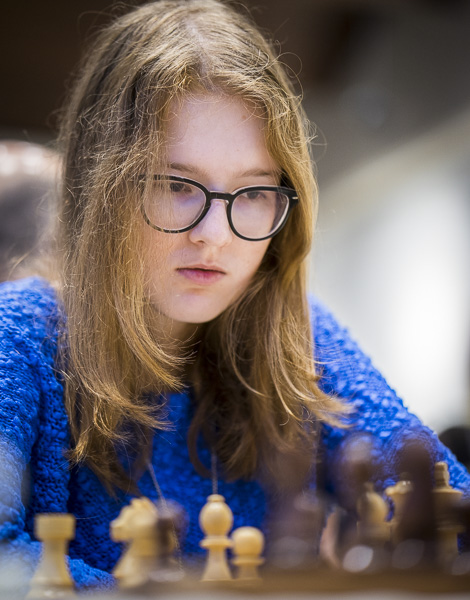
Maaike Keetman. Photo: Lennart Ootes
Maaike Keetman reached 50% after a game that was full of tricks and funny positions.
Van Dael - Keetman
1.e4 c5 2.Nf3 e6 3.d4 cxd4 4.Nxd4 Nc6 5.Nc3 Qc7 6.Be3 a6 7.Qd2 Nf6 8.f3 Be7 9.0–0–0 b5 10.g4 Nxd4 11.Bxd4 Bb7 12.g5 Nh5 13.Be5 Qxe5 14.Qxd7+ Kf8 15.Qxb7 Qb8 16.Qxb8+ Rxb8 17.Rg1 h6 18.h4

18...Nf4
The entire tactical sequence is known, and this position also occurred in the game Hentrich-Jorden van Foreest from the Staufer Open early this year. Keetman deviates here. Van Foreest played 18...Bc5 19.Rg4 Nf4 and the game ended in a draw. Keetman immediately applies pressure on the white kingside pawns.
19.Ne2 Ng6 20.Rg4?!
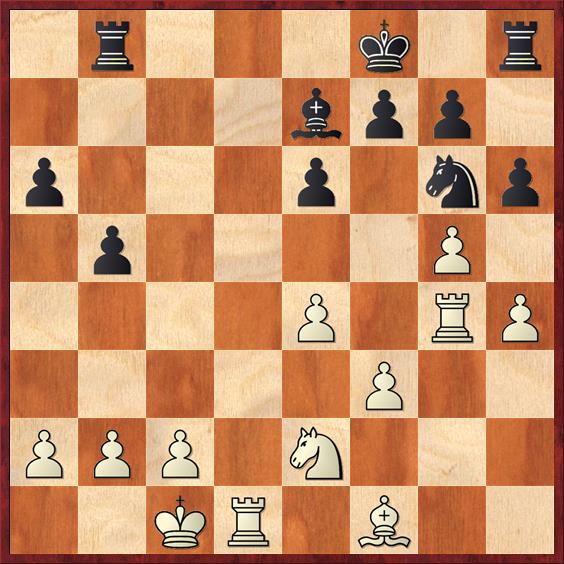
20...Nxh4! 21.gxh6 Rxh6 22.Nd4 Bc5 23.Nc6?
This only helps the black pieces.
23...Rc8 24.Ne5 Bf2?!
24...Be3+ 25.Kb1 g5.
25.Rd7 Rf6 26.Rd6?
After the protecting move 26.Be2 White would have been a tad better.
26...Nxf3! 27.Nd7+ Ke7 28.Rd3 Ne1! 29.Rd2?
White should have gone for 29.Nxf6 Nxd3+ 30.Bxd3 Be3+ 31.Kb1 gxf6, with good drawing chances. Now his position suddenly is a disaster.
29...Be3
One more picture.
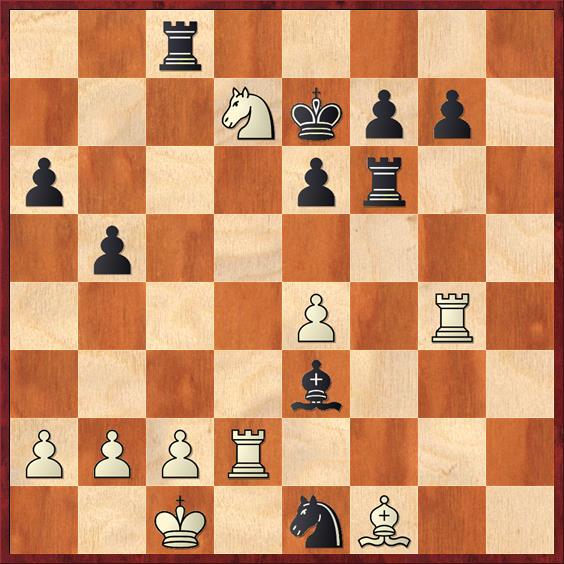
30.Nxf6 Rxc2+ 31.Kd1 Rxd2+ 32.Kxe1 Kxf6
And now White was two pawns behind. He resigned after:
33.Rg3 Bh6 34.Rf3+ Ke5 35.Rxf7 Rxb2 0–1

 .
. 






















